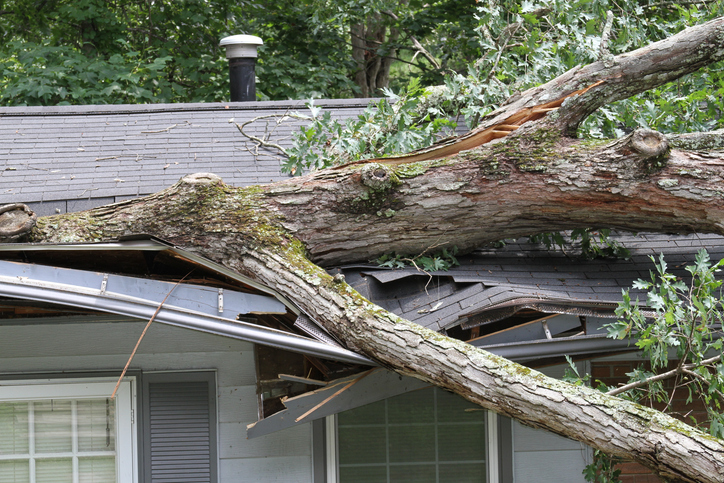The Science of Insurance Claim for Roof Damage by Wind
Understanding Wind Damage to Roofs
Wind damage to roofs is a common and costly issue for homeowners. High winds can cause significant harm, from lifting shingles to outright tearing off parts of the roof. This damage can lead to leaks, structural problems, and further degradation if not promptly addressed. Understanding the science behind wind damage to roof can help homeowners take preventive measures and effectively file insurance claim for roof damage by wind.
The Impact of Wind on Roofs
Wind exerts pressure on roofs in two main ways: uplift and horizontal push. Uplift occurs when wind travels over the roof and creates a low-pressure area, effectively pulling the roof upwards. Horizontal push happens when the wind hits the side of a building, pushing against the roof and its components. These forces can dislodge shingles, tiles, or even entire sections of roofing, making the structure vulnerable to water intrusion and other types of damage.
Identifying Wind Damage to Roofs
To file an effective insurance claim for a roof damage claim caused by wind, it is crucial to identify the signs of damage early. Common indicators include:
- Missing or Damaged Shingles: Wind can lift and remove shingles, exposing the underlayment to the elements.
- Curling or Peeling Shingles: Shingles that are starting to curl or peel back are often victims of wind damage.
- Granule Loss: Shingles losing granules can indicate that wind has weakened their integrity.
- Leaks and Water Stains: Signs of water damage inside the home, such as stains on the ceiling or walls, often indicate roof damage.
Filing an Insurance Claim for Roof Damage Caused by Wind
Filing an insurance claim for roof damage caused by wind involves several critical steps. Homeowners must be prepared to document the damage and navigate their insurance policy terms to ensure they receive adequate compensation.
Step 1: Assess the Damage
Before contacting your insurance company, conduct a thorough assessment of the damage. Take clear, detailed photos of all affected areas, both inside and outside your home. This visual evidence will be crucial when you file your claim.
Step 2: Review Your Insurance Policy
Understanding the specifics of your roofing insurance policy is vital. Policies can vary significantly, and knowing what is covered under your “insurance claim roof damage wind” clause will help set realistic expectations. Pay attention to deductibles, coverage limits, and any exclusions that might apply.
Step 3: Contact Your Insurance Company
Notify your insurance company about the damage as soon as possible. Provide them with all necessary documentation, including photos and a detailed account of the damage. Be prepared to answer questions about the event and the extent of the damage.
Step 4: Temporary Repairs
While waiting for the insurance adjuster, consider making temporary repairs to prevent further damage. Cover exposed areas with tarps or plywood to protect your home from additional weather-related issues. Keep receipts for any materials or services used, as these costs can be included in your claim.
Step 5: Meet with the Insurance Adjuster
An insurance adjuster will visit your property to assess the damage. It is beneficial to be present during this inspection to ensure all damage is documented accurately. This is where hiring Care Public Adjusters can be advantageous. They can provide expert guidance and ensure that the adjuster does not overlook any damage.
The Role of Care Public Adjusters
Care Public Adjusters are professionals who work on behalf of the policyholder to help navigate the claims process. They are experts in understanding policy language and can negotiate with the insurance company to ensure a fair settlement. Their involvement can make a significant difference, especially in complex claims where the extent of wind damage might be disputed.
Preventive Measures to Minimize Wind Damage
While it’s essential to know how to handle an insurance claim for roof damage caused by wind, prevention is always better than cure. Homeowners can take several steps to minimize the risk of wind damage:
- Regular Inspections: Schedule regular roof inspections to identify and repair minor issues before they become major problems.
- Reinforce Roofing Materials: Use wind-resistant roofing materials and techniques, such as nailing patterns and adhesive products designed to withstand high winds.
- Trim Trees and Secure Outdoor Items: Keep trees trimmed and remove dead branches that could fall on the roof during a storm. Secure outdoor furniture and other items that could become windborne debris.
Conclusion
Navigating the process of an insurance claim for roof damage caused by wind can be challenging. However, with proper documentation, a clear understanding of your policy, and the assistance of professionals like Care Public Adjusters, you can ensure that your claim is handled effectively and that you receive the compensation you deserve. By taking preventive measures and understanding the dynamics of wind damage, homeowners can protect their investments and maintain the integrity of their roofs for years to come.

